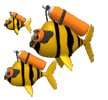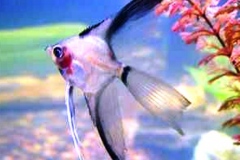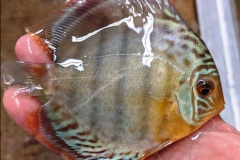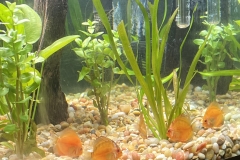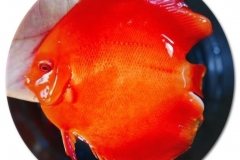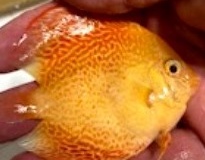Last month we went over getting a pair to spawn, this month we will go over the actual spawn.
The first sign that your Flowerhorn are getting ready to spawn is that they will start to clear off a flat surface in the tank. As we said last Newsletter, this will often mean that they clean of the bottom of the tank. Flowerhorn can lay up to 500 eggs in one spawn and that requires a surface that is about 8 inches square. Prior to this, the male will have been the dominant fish. During the entire spawn and while the eggs are not yet free swimming, the roles will reverse and the female will become dominant. She will start acting aggressively toward the male and often will do “Lip Locking” with the male as a sign of courtship. Lip Locking is not a sign off affection as in kissing. Rather, it is a sign of aggression in the courtship. Unlike many other Cichlids, such as Discus, they will do very little in the way of a spawning “Dance”. At some point she will try to herd the male to the area that will be the spawning surface. Spawning actually starts when she begins laying the eggs. She will lay them in rows of 10 –30 eggs. The male will follow behind her, sometimes every time she lays eggs and at other times after every 3rd or 4th laying run, and fertilize the eggs. After the spawn, the female will stay directly above the eggs and the male will stay on the periphery of the eggs and guard against all intruders. If you put your hand in the tank, it will be viciously attacked.
